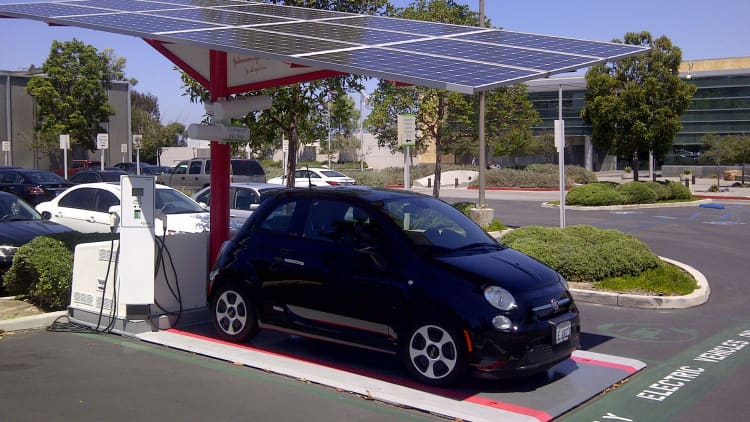Reduced energy demand and a glut of power have created a situation where Californians are paying more for their electricity than they should be, according to a report.
The Golden State "has a big — and growing — glut of power," an investigation by the L.A. Times reported Sunday. The paper said by 2020 California could generate "at least 21 percent more electricity than it needs" — and that's excluding power from rooftop solar sources.
Also, while power usage in the state has fallen since 2008, Californians are paying $6.8 billion more for electricity then they did back then, the paper said.
Indeed, data from the U.S. Energy Information Administration showed California households paying 17.97 cents per kilowatt hour for electricity, or 40.9 percent more than the national average of 12.75 cents, according to the latest data from November 2016. New England states also have high electricity costs. But out West, only Alaska and Hawaii have higher average electricity costs.
The California Energy Commission responded Tuesday, contending that "while California's electricity rates may be higher than average when compared to other states, the actual bills are less than average."
"California certainly is moving in the direction of having a significant surplus of power," Michael Ferguson, a director in the U.S. energy infrastructure group at S&P Global Ratings, told CNBC in an interview Monday.

Ferguson said energy efficiency programs are keeping California's electricity demand more or less flat compared with other parts of the country. He said a leveling of demand also is due to the state becoming more of a services-oriented economy rather than manufacturing-based economy.
In part, the Times blamed state regulators for approving plants that were not needed.
At the same time, experts say growing interest in energy storage — including battery energy storage technology — could have an additional impact on the electricity market in the nation's most populous state.
"If you effectively at certain points of the day can just draw on a battery that's been stored at some other point, it kind of levels out the curve, which creates less need for generation," said Ferguson.
Last month, Tesla unveiled a battery storage system in Southern California that can charge at times of low demand and send power on the electricity grid during peak times. Researcher FBR has estimated that while the U.S. market for the technology is small today, it could reach as high as $75 billion within a decade.
WATCH: Now you can fuel electric cars with nothing but the sun

CORRECTION: This story was revised to correct that the U.S. Energy Information Administration data are in cents per kilowatt hour for electricity.


